Abstract
One hundred and seventy-one cases of operable invasive lobular carcinoma, presenting over an 11-year period, were reviewed. Histological subtypes were investigated to determine differences in their clinical behaviour and whether these differences could be explained by histopathological features. Five subtypes were identified: mixed (45.6%), classical (30.4%), tubulo-lobular (13.5%), solid (6.4%) and alveolar (4.1%). The median follow-up period was 64 months and the median age 54 years. The 12-year actuarial survival rate was 100% for the tubulo-lobular subtype, but only 47% for the solid variant. Similar differences were found in the disease free interval, locoregional and distant metastatic rates between these two subtypes. The tubulo-lobular tumours were more likely to be of good histological grade and node negative. The other three subtypes did not differ significantly in their histopathological parameters, reflected in similar clinical behaviour. They occupied an intermediate position between the other two subtypes in terms of prognosis.
Full text
PDF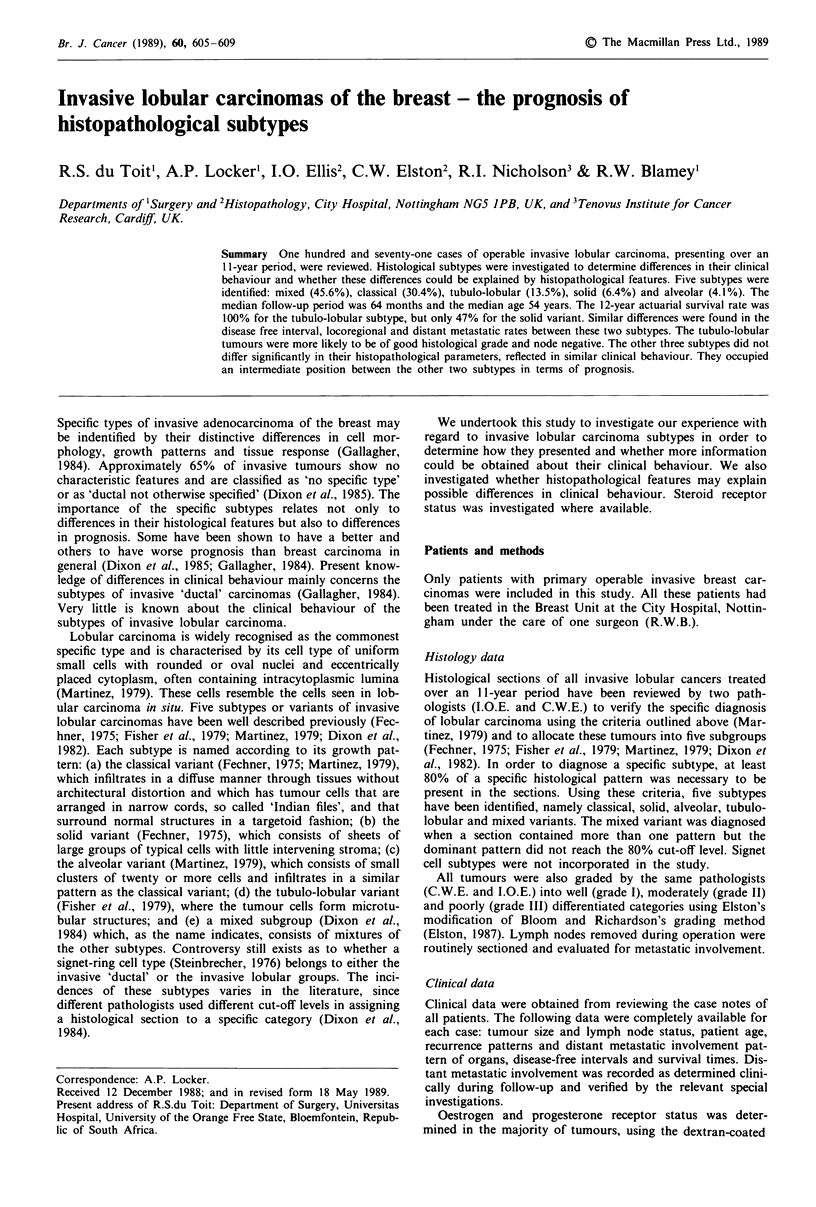
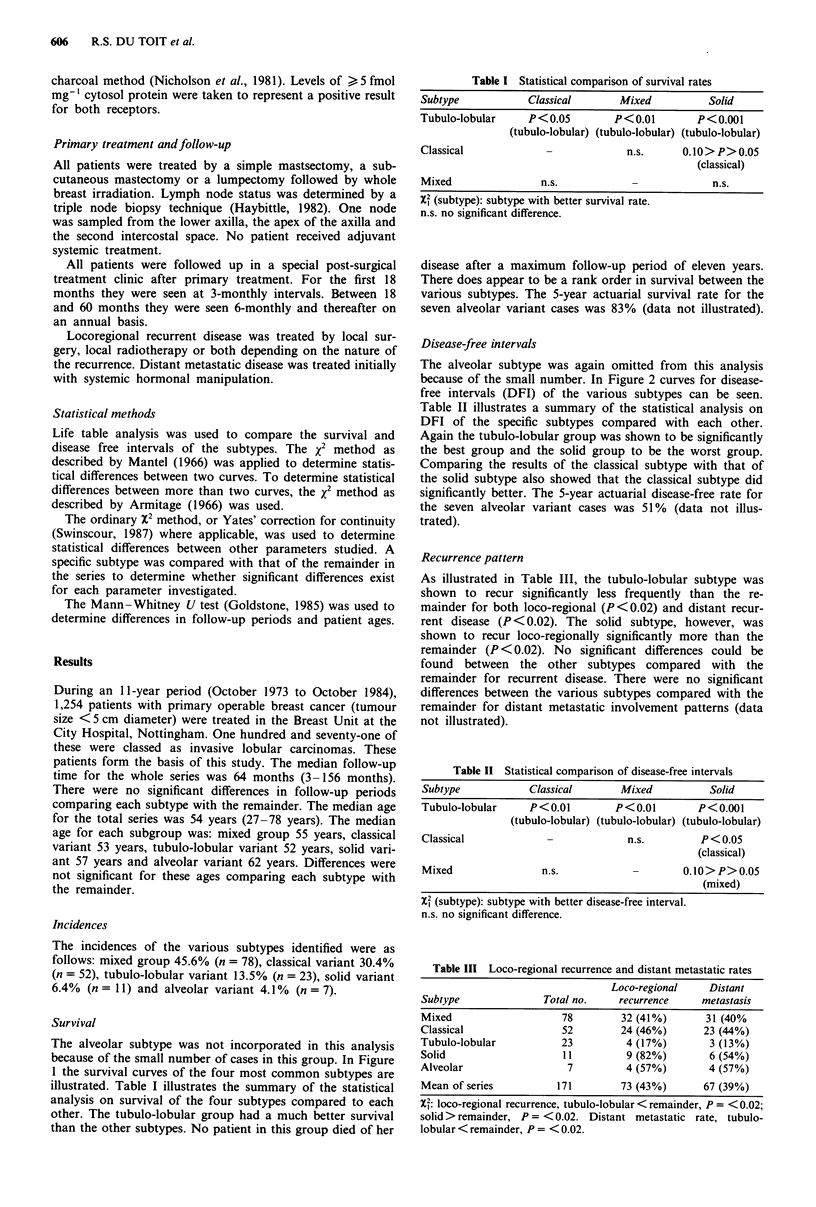
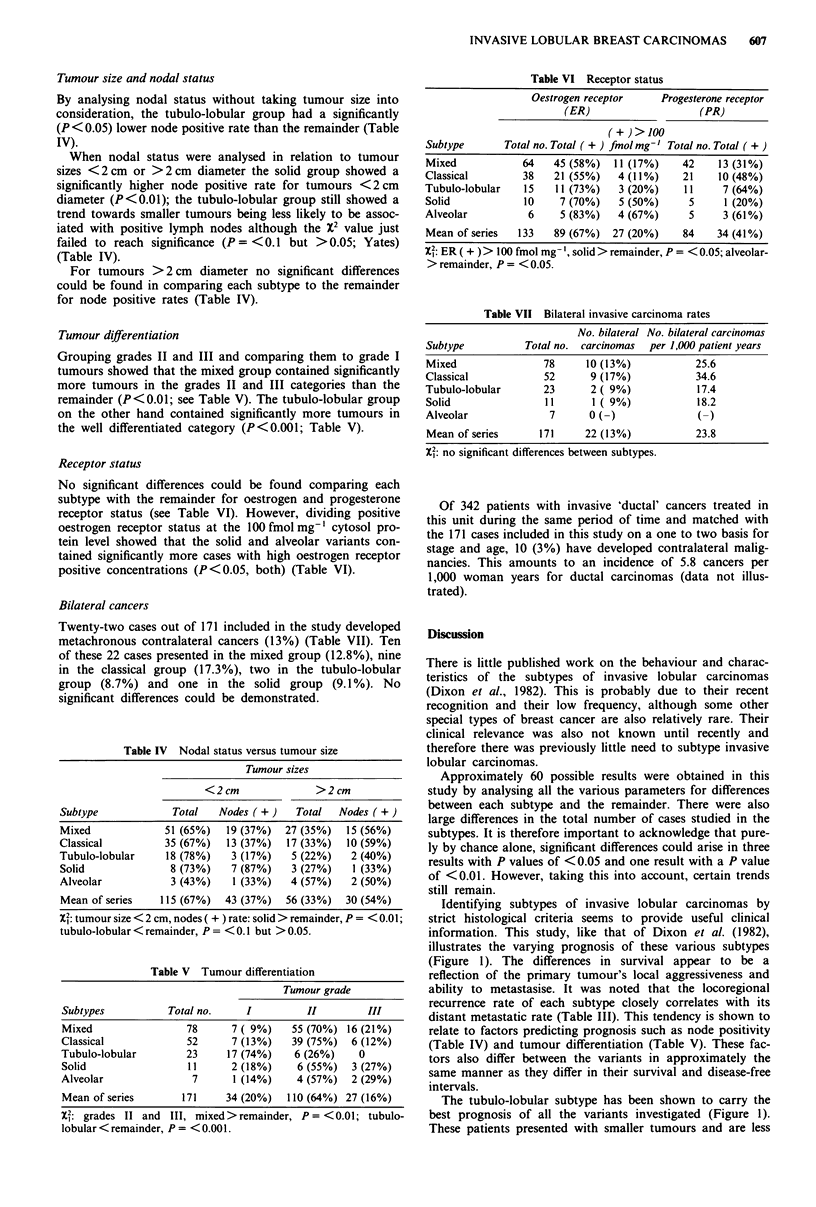
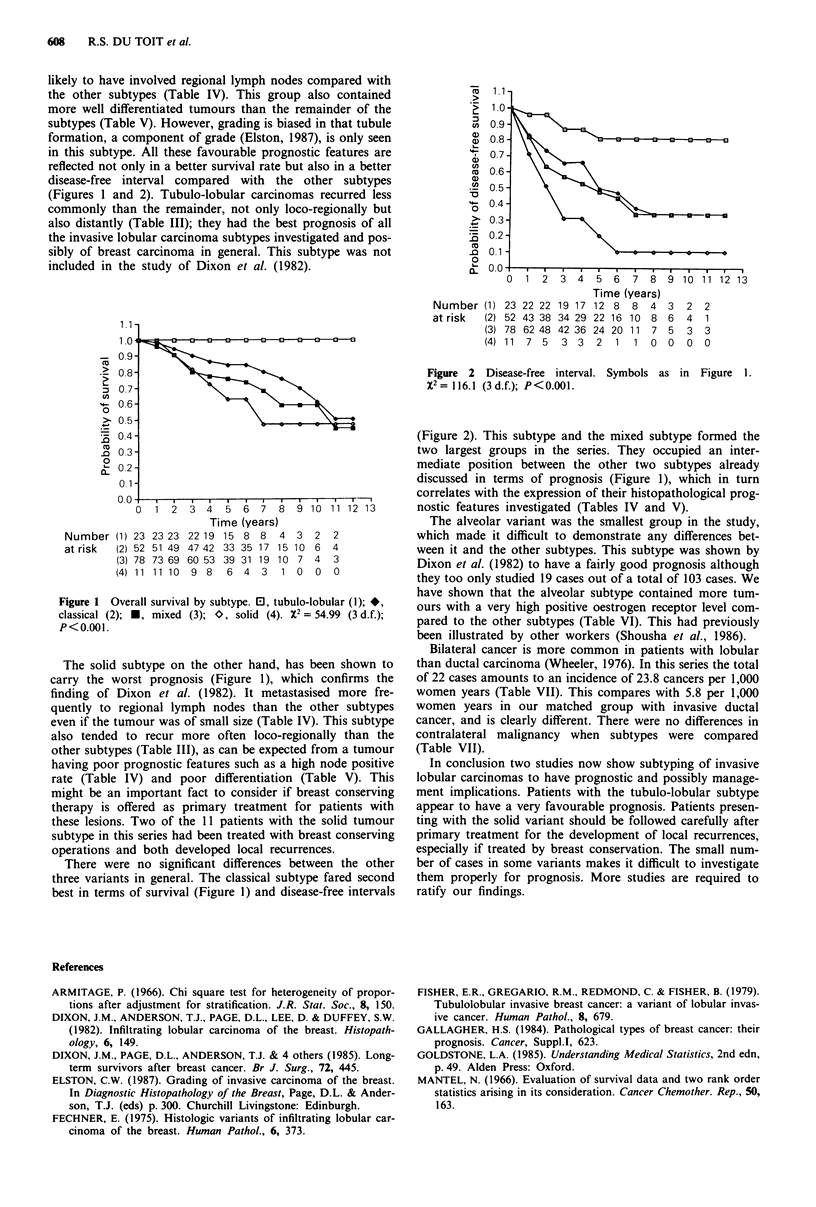
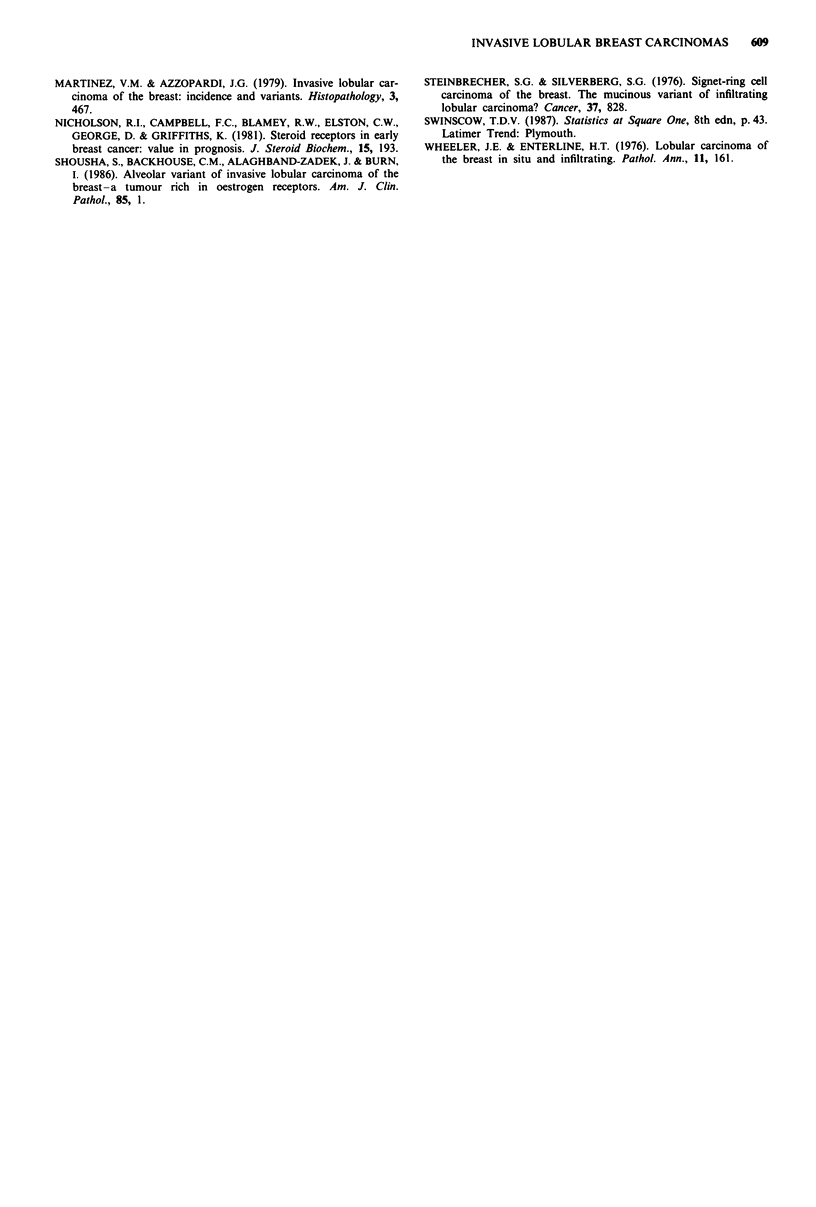
Selected References
These references are in PubMed. This may not be the complete list of references from this article.
- Dixon J. M., Anderson T. J., Page D. L., Lee D., Duffy S. W. Infiltrating lobular carcinoma of the breast. Histopathology. 1982 Mar;6(2):149–161. doi: 10.1111/j.1365-2559.1982.tb02712.x. [DOI] [PubMed] [Google Scholar]
- Dixon J. M., Page D. L., Anderson T. J., Lee D., Elton R. A., Stewart H. J., Forrest A. P. Long-term survivors after breast cancer. Br J Surg. 1985 Jun;72(6):445–448. doi: 10.1002/bjs.1800720614. [DOI] [PubMed] [Google Scholar]
- Fechner R. E. Histologic variants of infiltrating lobular carcinoma of the breast. Hum Pathol. 1975 May;6(3):373–378. doi: 10.1016/s0046-8177(75)80099-2. [DOI] [PubMed] [Google Scholar]
- Fisher E. R., Gregorio R. M., Redmond C., Fisher B. Tubulolobular invasive breast cancer: a variant of lobular invasive cancer. Hum Pathol. 1977 Nov;8(6):679–683. doi: 10.1016/s0046-8177(77)80096-8. [DOI] [PubMed] [Google Scholar]
- Mantel N. Evaluation of survival data and two new rank order statistics arising in its consideration. Cancer Chemother Rep. 1966 Mar;50(3):163–170. [PubMed] [Google Scholar]
- Martinez V., Azzopardi J. G. Invasive lobular carcinoma of the breast: incidence and variants. Histopathology. 1979 Nov;3(6):467–488. doi: 10.1111/j.1365-2559.1979.tb03029.x. [DOI] [PubMed] [Google Scholar]
- Nicholson R. I., Campbell F. C., Blamey R. W., Elston C. W., George D., Griffiths K. Steroid receptors in early breast cancer: value in prognosis. J Steroid Biochem. 1981 Dec;15:193–199. doi: 10.1016/0022-4731(81)90275-2. [DOI] [PubMed] [Google Scholar]
- Shousha S., Backhous C. M., Alaghband-Zadeh J., Burn I. Alveolar variant of invasive lobular carcinoma of the breast. A tumor rich in estrogen receptors. Am J Clin Pathol. 1986 Jan;85(1):1–5. doi: 10.1093/ajcp/85.1.1. [DOI] [PubMed] [Google Scholar]
- Steinbrecher J. S., Silverberg S. G. Signet-ring cell carcinoma of the breast. The mucinous variant of infiltrating lobular carcinoma? Cancer. 1976 Feb;37(2):828–840. doi: 10.1002/1097-0142(197602)37:2<828::aid-cncr2820370231>3.0.co;2-n. [DOI] [PubMed] [Google Scholar]
- Wheeler J. E., Enterline H. T. Lobular carcinoma of the breast in situ and infiltrating. Pathol Annu. 1976;11:161–188. [PubMed] [Google Scholar]


